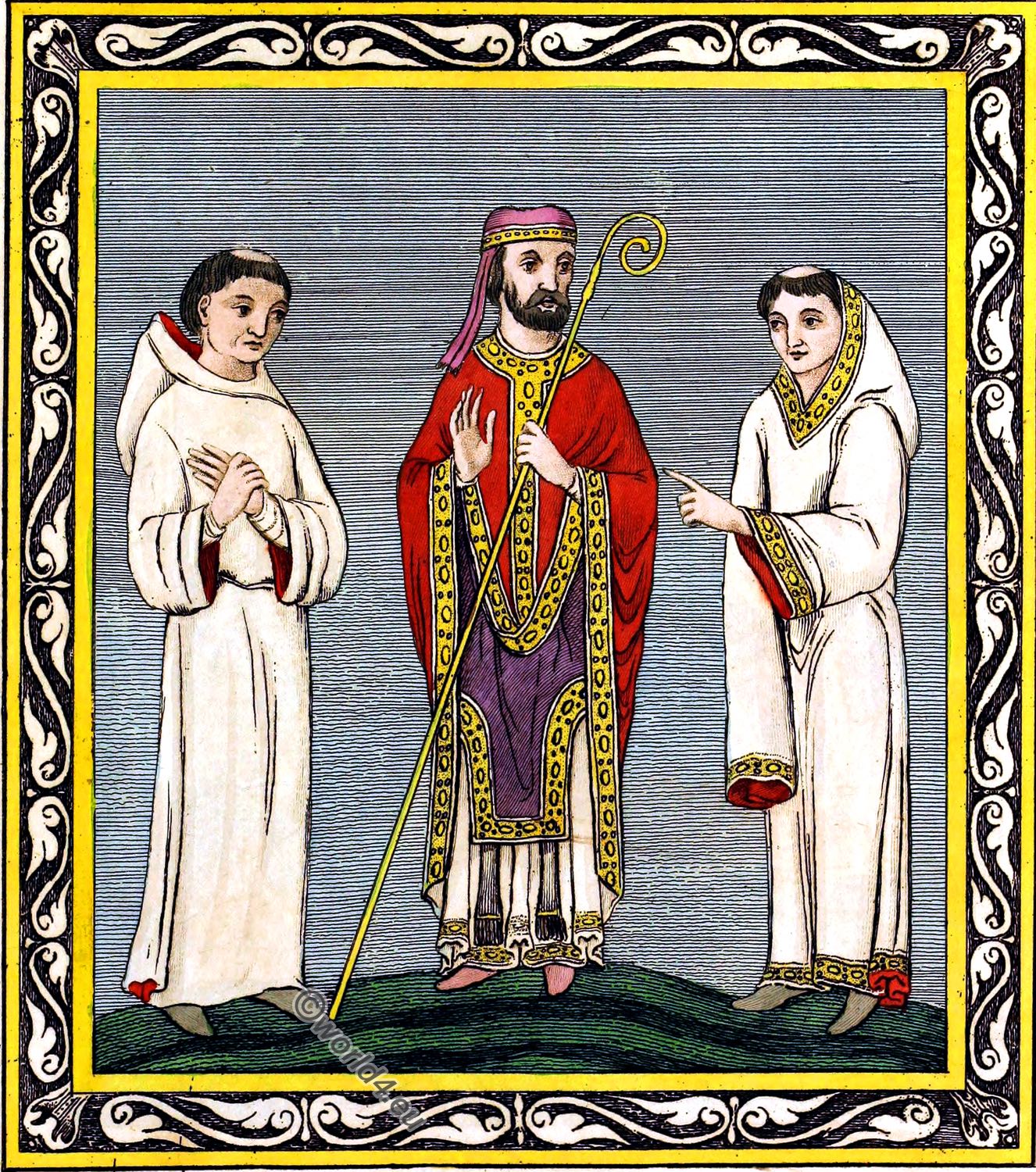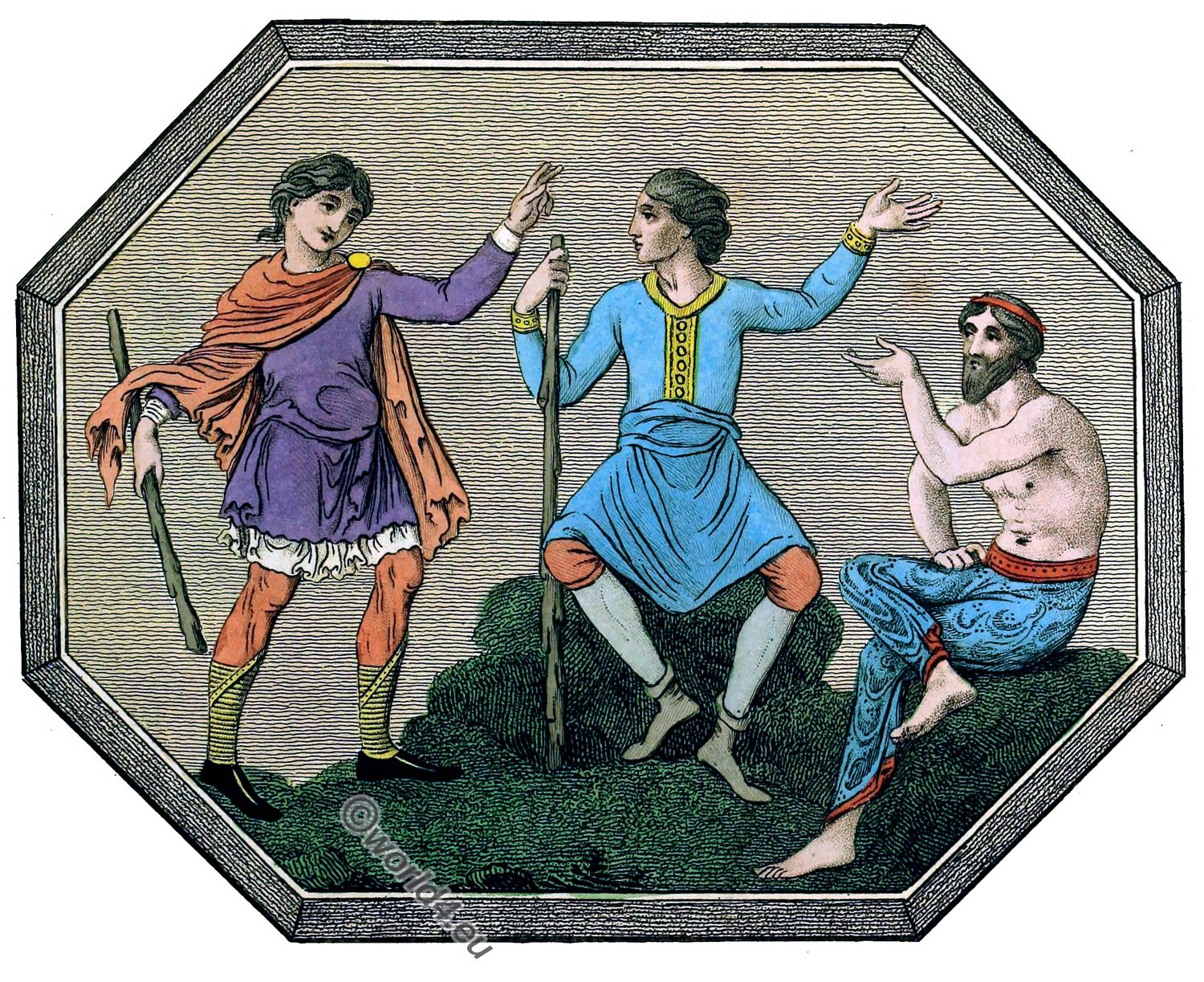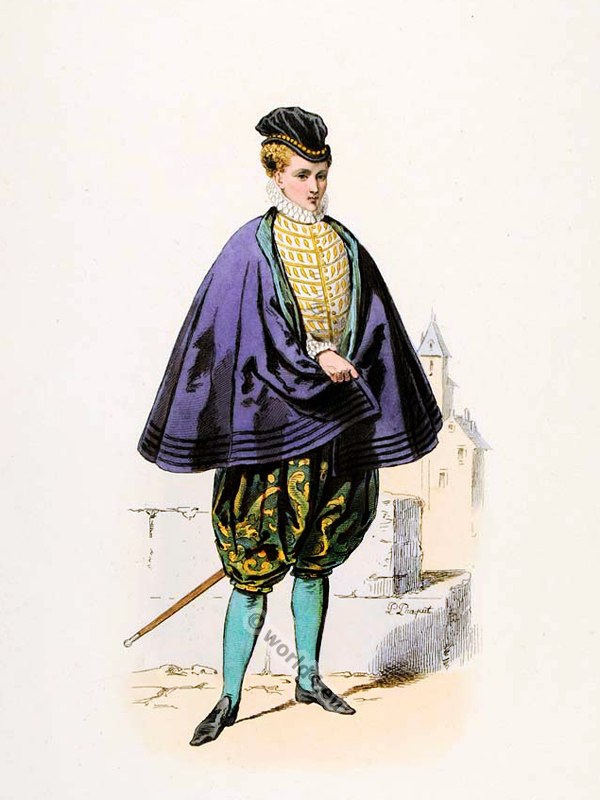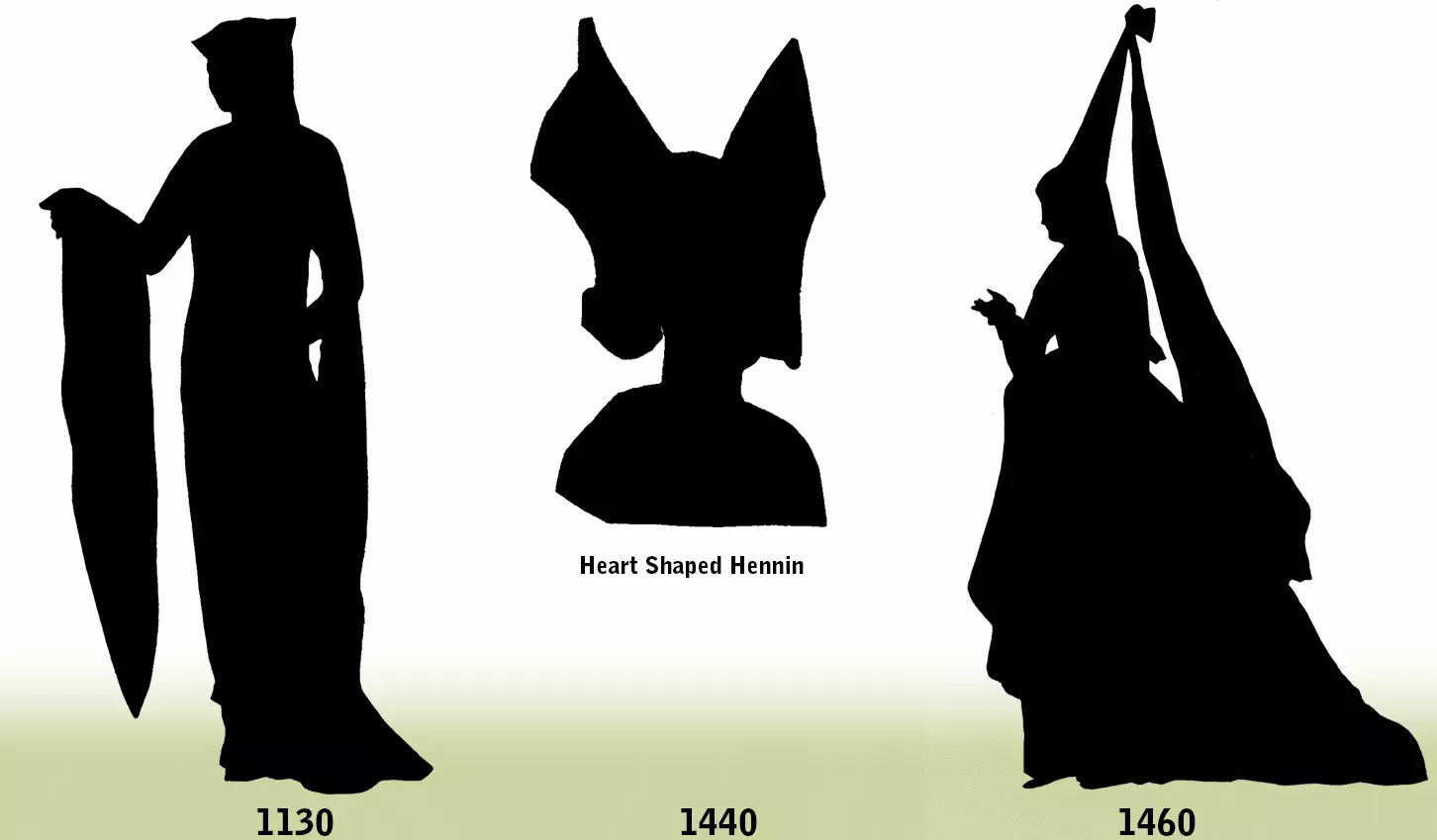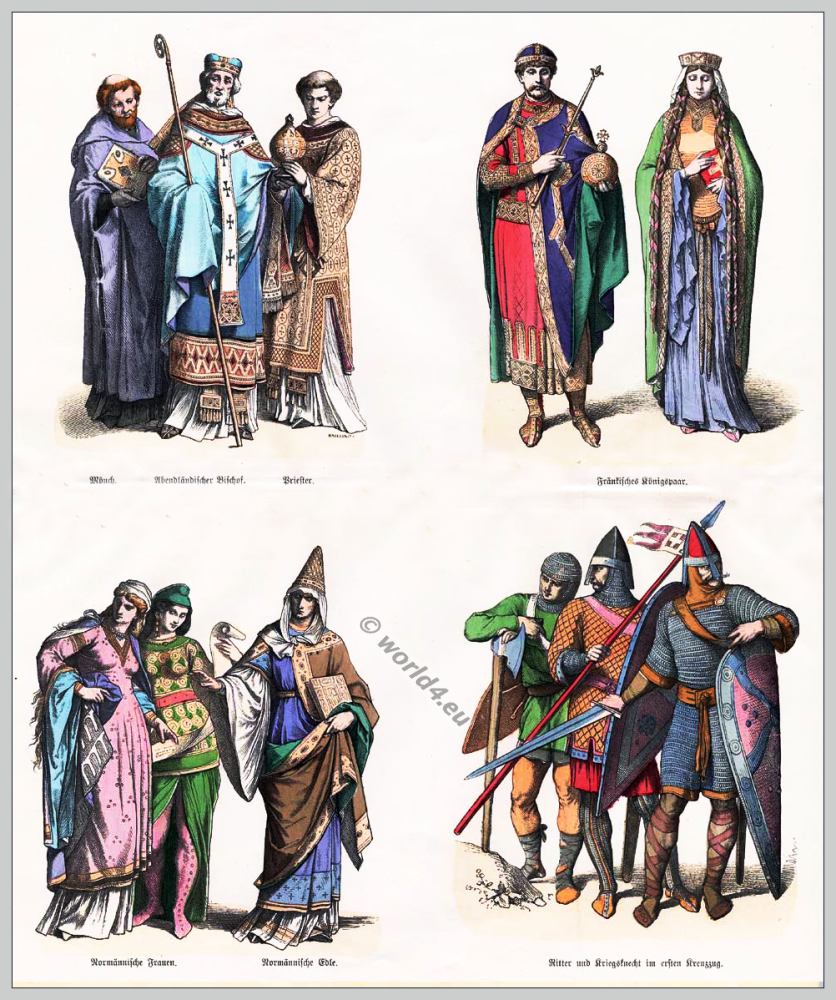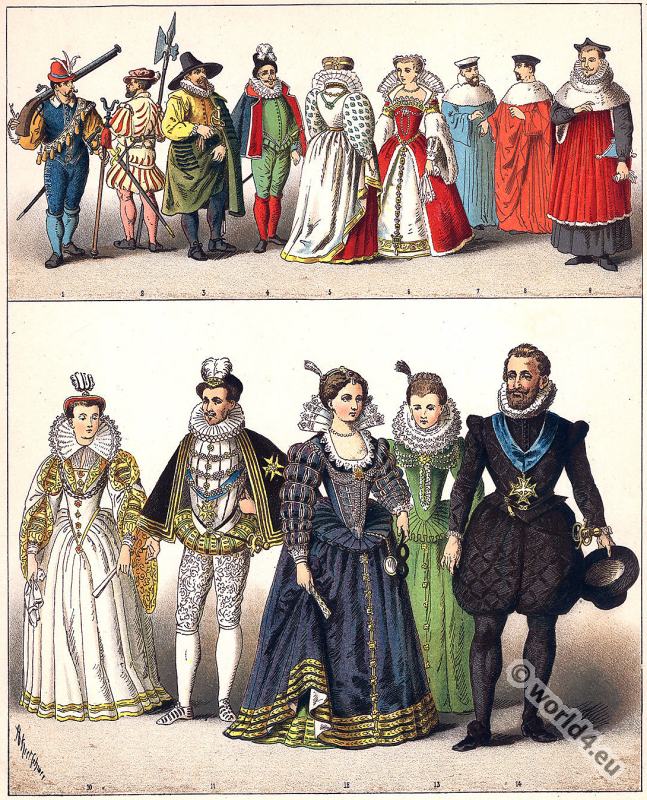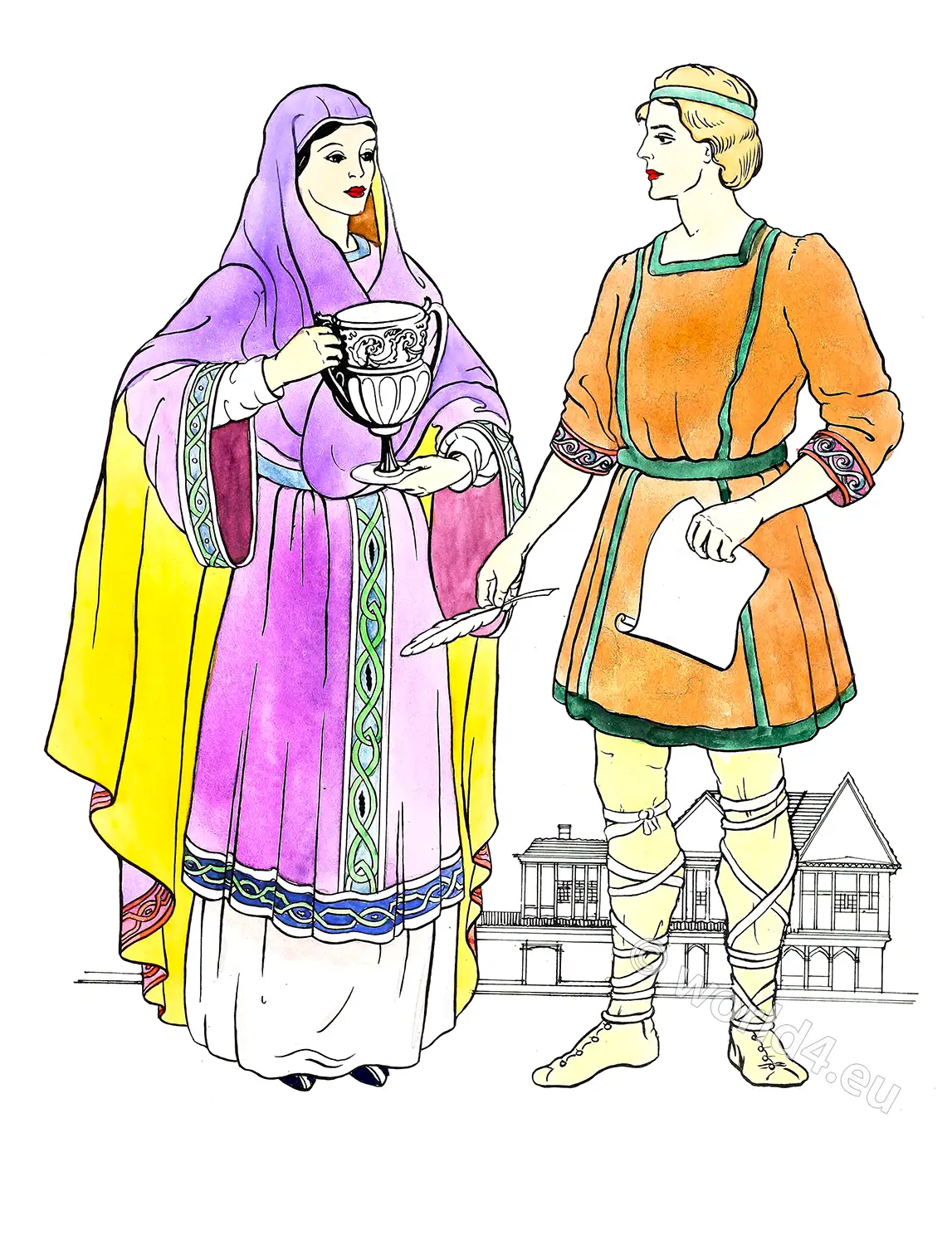The dress of the Anglo-Saxons. 8th to 11th century
PERHAPS no part of the history of civilization is more interesting than the varying changes in dress and fashion. The different tribes who settled in the provinces of the Roman Empire, after its final dislocation, appear in general to have adopted the civil costume of the conquered Romans, whilst they probably retained with tenacity the arms and military customs of their forefathers. There was thus a general resemblance between the dress of the Anglo-Saxons, the Franks, and other nations of the west. Among the Anglo-Saxons this dress was preserved, with very little alteration, till the latest period of their sovereignty.
The dress of the Anglo-Saxons was simple and uniform in its character. It consisted, as far as we can gather from the allusions of old writers, and from the illuminations of manuscripts, of a shirt (called in Anglo-Saxon syrce, the origin of the more modern word sark), which was generally of linen; of breeches (in Anglo-Saxon bróc, pl. bréc, the origin of the modern name) which appear also to have been commonly of linen; and of a tunic of woollen or linen (called rooc, or roc), which descended to the knee, and was bound round the body with a girdle. Over this was thrown a mantle (mentel), a short cloak which was fastened at the breast or on the shoulders with brooches.
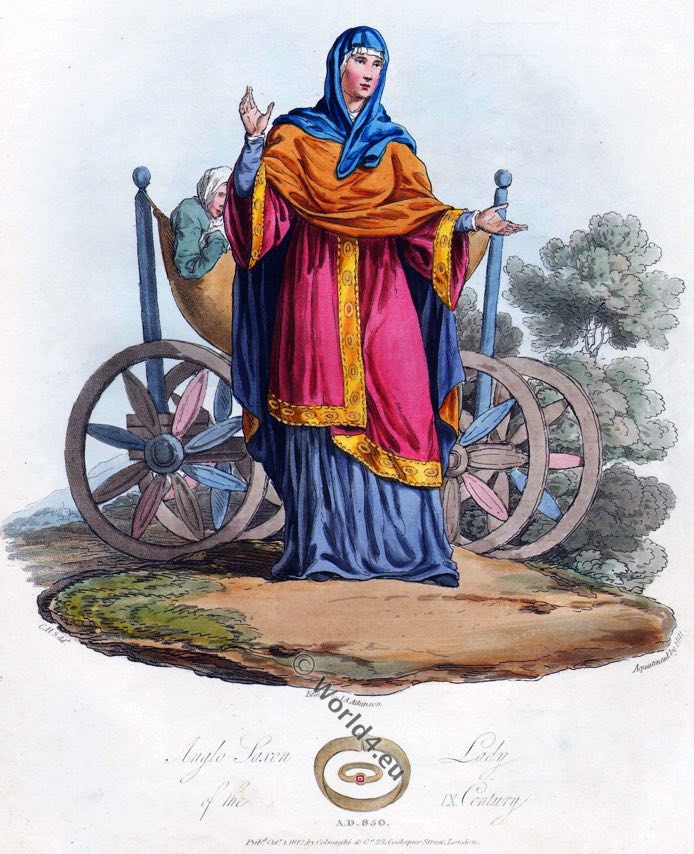
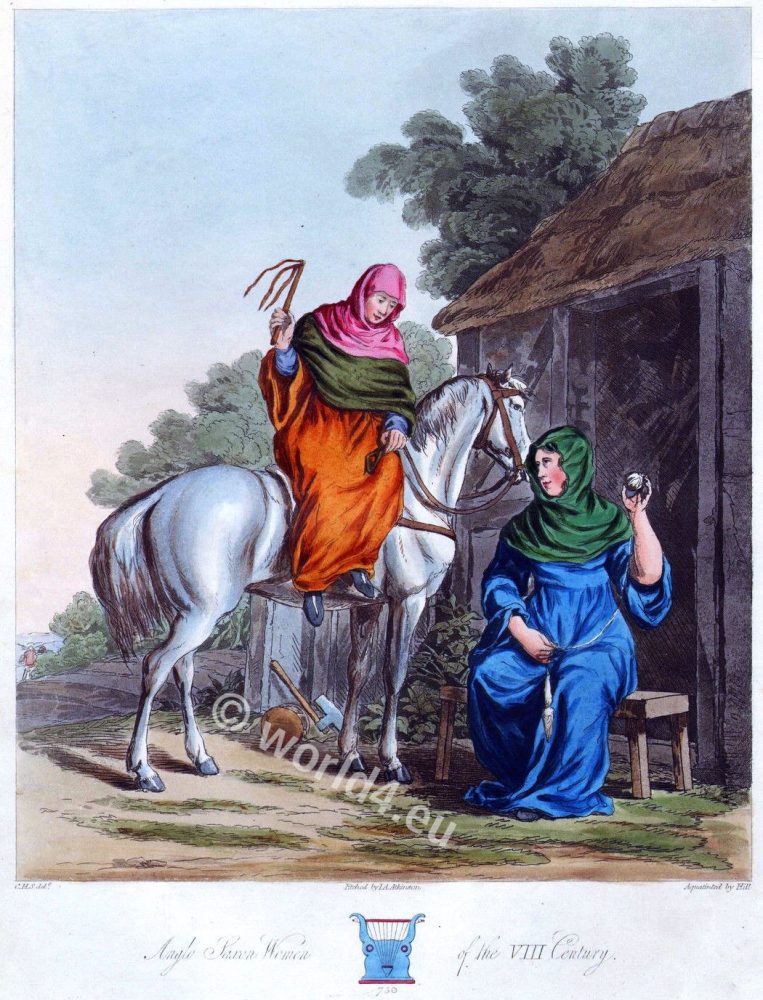
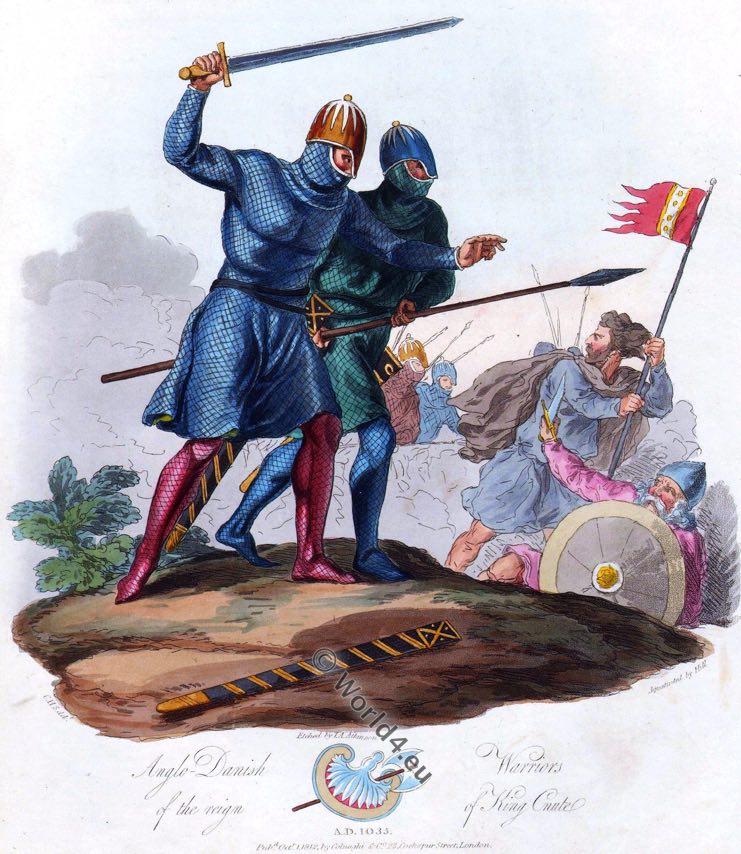
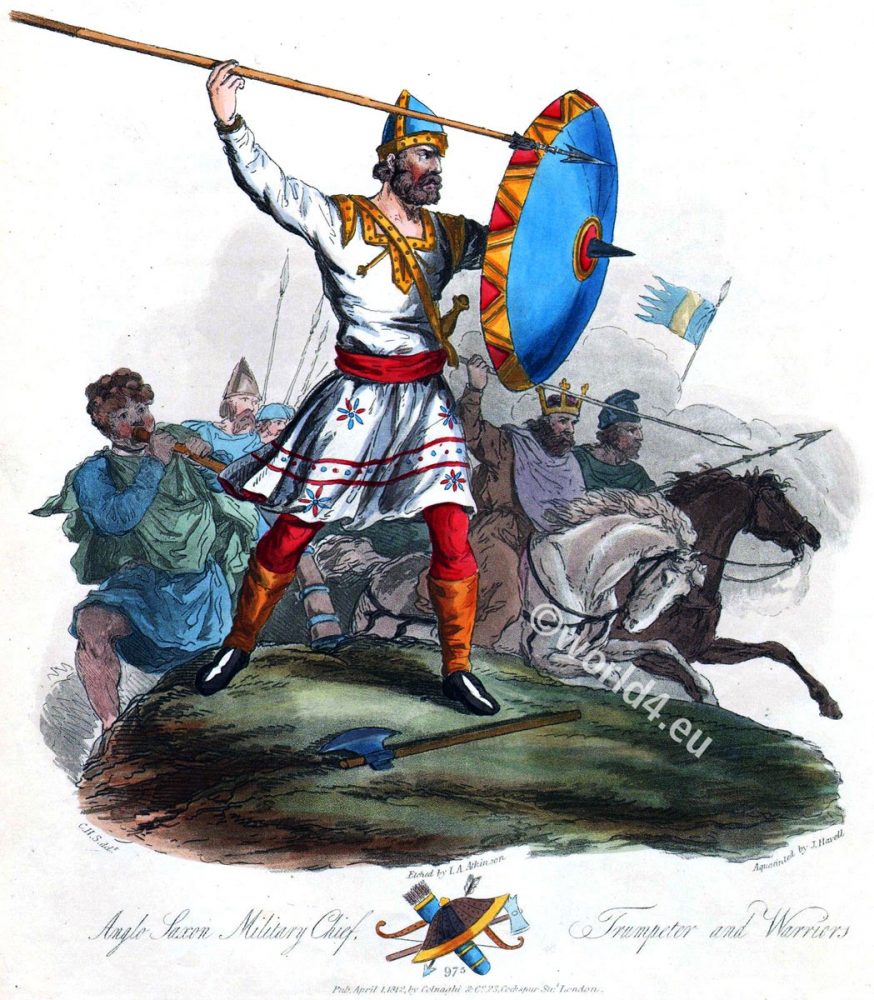
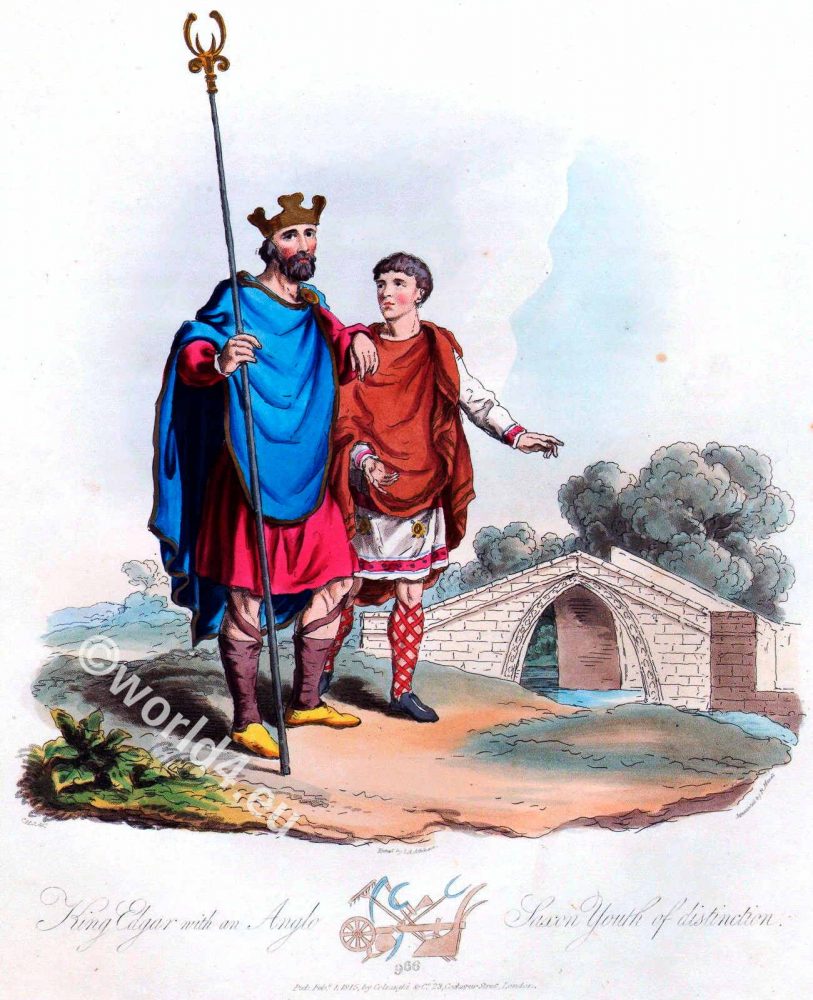
On the legs were worn hose (hos) which joined the breeches a little below the knee, which were frequently bound round with fillets, called hose-bendas (hosebands), scanc-beagas (leg-encirclers), scanc-bendas (leg-bands), scanc-gegirelan (leg-clothings).
The form of the shoes, as represented in the manuscripts, is nearly uniform; they cover the foot to the ancle, are tied with a thong, having an opening down the instep, and are generally painted black, except in the case of princes and great persons, who have them frequently gilt or covered with gold.
That gloves were not unknown to the Anglo-Saxons, is proved by the circumstance that the name (glof) occurs in the earliest Anglo-Saxon poetry.
The form of the articles of dress was the same for all classes of society, differing only by the richness of the material or by the greater profusion of ornament. The leg-bands were used chiefly when the wearer was engaged in the more active pursuits of life, and particularly in travelling and in war. Rich people, when in full dress, or on ceremonial occasions, wore a more ample tunic, descending to the feet. The sleeve of the tunic, between the elbow and the wrist, appears to be puckered up, and confined above the hand by a bracelet.
Laborers and peasants appear frequently without hose, and sometimes without shoes. In the Illustrations of Prudentius, and in the twelve pictures of The Seasons, we see all these articles of Anglo-Saxon costume in most of the different ranks of society.
Among the latter, in the illustrations of the month of April, the persons seated at the festival wear the large ceremonial tunic. In the second subject from Prudentius the soldier’s mantle appears to be ornamented by jagging at the border, somewhat like the fashion which became so prevalent in the time of Richard II.
In the illuminations, the Anglo-Saxons appear generally without hat, except when full armed for war or travelling. They also contradict the assertion which has been made that the Anglo-Saxons universally wore long flowing hair, for it is there generally cut short.
The dress of the Anglo-Saxon ladies cannot be described with the same precision as that of the men. The outer vest was a large flowing tunic, which among persons of high rank was made of richly ornamented stuffs; the Anglo-Saxon eyrtel is supposed to have been a shorter tunic, under this, and next to the skin was probably the syrce.
The mantle of the ladies was also much larger than that of the men, and hung down before and behind. The head is generally covered with a long piece of silk or linen, which is also wrapped round the neck. The shoes appear to have been the same for both sexes.
During the Anglo-Saxon period the common dress of the ecclesiastics does not appear to have differed much from that of the laity. The ceremonial robes resembled those of a later period, except that the mitre was not yet in use. The tonsure was received among the Anglo-Saxon clergy early, though not without considerable opposition.

In the illuminations, the only addition to the dress of the warrior is his cap or hat, a kind of Phrygian bonnet, generally crested at the top. Perhaps the military tunic was made of thicker and less penetrable materials than that of the civil costume. Mail was probably only used by chieftains. The arms were an oval or round convex shield, made of wood, covered with leather, with the umbo and rim of iron; a sword; and a spear, or an axe.
The heads of the Saxon battle-axes are frequently found in England, and have received from antiquaries the inaccurate name of celts. The Danes brought into more general use a double-bladed axe, which was long afterwards known by the name of the Danish axe. The bow does not appear to have been used with much effect among the Anglo-Saxons. It may also be observed that the Anglo-Saxons always fought on foot.
The art of jewellery appears to have been extensively encouraged among the Anglo-Saxons. People of rank and wealth covered their persons with bracelets, rings, brooches, and other ornaments, in precious metals and stones. Their ornaments were in general richer in the materials than in the design.
The Anglo-Saxons appear to have been devoid of taste in the arts; their drawings are, with a few exceptions, exceedingly rude and incorrect. The specimens given in the present work are much superior to those which are found in the greater number of contemporary manuscripts. The general style of Anglo-Saxon ornament resembles that which is commonly named Byzantine: borders and initials in books are not dissimilar from those found in the earlier Greek Ecclesiastical manuscripts. The borders of leaves in books are sometimes painted in a sort of mosaic work, and executed with considerable beauty.
Source:
- Dresses and Decorations of the Middle Ages by Henry Shaw.
- Joseph Strutt. The regal and ecclesiastical antiquities of England: containing the representations of all the English monarchs from Edward the Confessor to Henry the Eighth : together with many of the great persons that were eminent under their several reigns: the whole carefully collected from ancient illuminated manuscripts. Published 1777.
Related
Discover more from World4 Costume Culture History
Subscribe to get the latest posts sent to your email.


